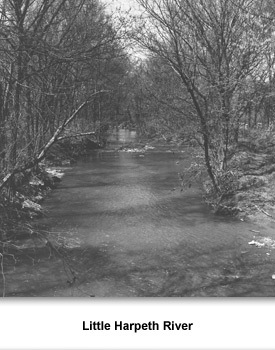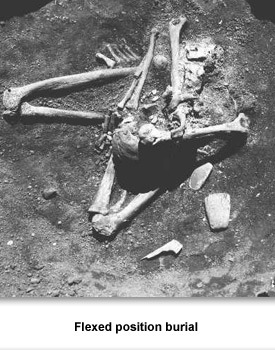Anderson Site
Anderson Site—Harpeth River, Williamson County
The Anderson site was a Middle Archaic settlement along the Harpeth River in Williamson County, Tennessee. It was dis-cover-ed by the grandson of the farmer who owned the land. The boy was hunting for relics on his grandfather’s farm and un-cover-ed three human burials. Local archaeologists were contacted who excavated the site.
The Anderson site is a very unique Archaic site. It is the best and largest example of an Archaic site in Middle Tennessee. One of the most unique characteristics about the Anderson site is that it was occupied only by the Middle Archaic people. It was occupied only between 5,000 B.C. to 3,500 B.C.
The Anderson site contains a wide variety of fossilized food remains. This includes remains from deer, turkey, raccoon, rabbit, squirrel, turtle, frogs, fish, and snakes.
One of the most abundant foods they ate was mollusks. They ate so many mollusks that nearly all of the land around the site was -cover-ed by mollusk shell trash heaps. The shells helped preserve all the many artifacts, including human bones.
During the excavation, archaeologist found 73 human burials, some nearly 7,000 years old. Most bodies were buried in a “flexed” position, meaning the legs and arms were pulled up close to the chest. We call this the fetal position today. Archaeologists are unsure why Middle Archaic Indians buried their dead this way.
The bones from the bodies indicate that the Anderson site people were generally healthy. The infant mortality rate was about 20 percent. This means that one out of every five babies died before their first birthday. The average life expectancy of an individual at the Anderson site was 30 to 35 years. Only 10 percent lived to be 50 years old.
The Anderson site Indians made and used many artifacts made of bone and stone. Archaeologists un-cover-ed many tools including bone needles, fish hooks, and awls to make clothing, as well as stone projectile points and atlatl weights. Other artifacts reveal they had significant trade networks established. Conch shells from the Gulf Coast and copper from the Great Lakes region show that these Indians participated in a system of trade.
Picture Credits:
- Photograph of the Little Harpeth River. This photo was taken in 1948 in Williamson County, Tennessee. Tennessee State Library and Archives
- Photograph of a flexed position burial similar to those found at the Anderson site. This photo was taken in 1935 in Claiborne County, Tennessee. Tennessee State Library and Archives
First Tennesseans >> Learning About the Past >> Tennessee Digs >> Anderson Site


 Sponsored by: National Endowment for the Humanities
Sponsored by: National Endowment for the Humanities